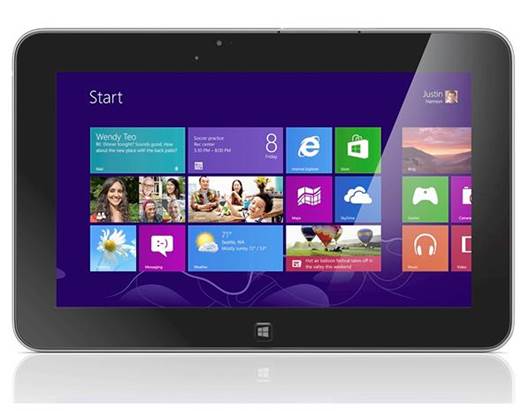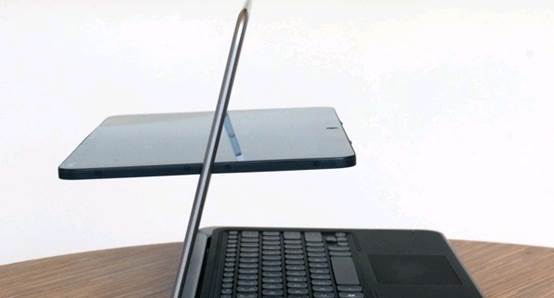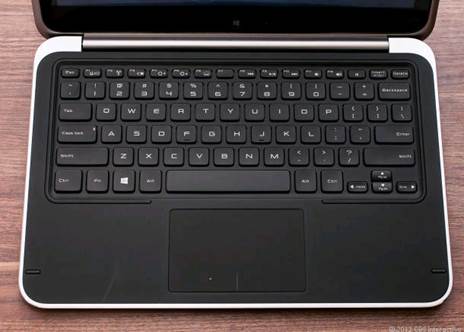Software
It would be wrong to say Windows 8 indicates
the end of crapware, but if there are any unwanted kinds of software on your
new system, at least it would be more discreet. In general, for systems with
Windows 8, you will not find the shortcut randomly filling the screen when you
first boot the machine up, and the PC manufacturers also seem to have given up
trying to customize Windows add-ons such as Dell Dock and VAIO Gate. On the
Start Menu, the OEM is a special place where they are allowed to put their own
applications. In the case of the Dell XPS 12, the number of pre-installed
programs are quite small. You have the Amazon Kindle app, Skype, Photo Gallery,
Movie Maker, Microsoft Office, Shop Dell, Dell Support Center and the Amazon
Store (not a browser link but the real application). In short, they accounted
for more than one column in the Start Menu, which is quite reasonable.

On
the Start Menu, the OEM is a special place where they are allowed to put their
own applications.Configuration options and competitors
Our basic $1,200 model comes with a Core
i5-3317U 1.7GHz processor, 4GB RAM and 128GB SSD. At $1,400, you can have the
same configurations basically, but with 8GB RAM. With an additional $100 (i.e.
$1,500 now), you have the Core i5 processor, 8GB of RAM, and a 256GB SSD.
Finally, the most expensive model: the $1700 model that has all the
specifications above, but with a Core i7-3317U. Regardless of which
configuration you choose, Intel HD 4000 graphics are standard, such as Gorilla
Glass display 1080p, 400 nits.
To trim a long list of potential options of
Windows 8, we will assume you are considering the XPS 12, which means that you
like the idea of one laptop having full strength but can also be used in
tablet mode from time to time. If you do not mind, we will ignore most of
laptops / tablet hybrids that we have mentioned, since most of them run on Atom
processors – buy one of these and you will have to adjust expectations in terms
of performance (at least their battery life is extended).
As we have mentioned, one of the XPS 12’s
biggest competitors is the Lenovo IdeaPad Yoga with a 13-inch screen that folds
completely to the back if you use it in tablet mode, and its keyboard is
exposed at the rear. We have mentioned that the exposed keys look like a key
inconvenience potential, but you can edit using an optional external casing. The
Yoga also has a screen with fewer pixels: larger but it also has a lower
resolution (1600x900 vs. 1080p). However, it weighs nearly the XPS 12, despite
having a larger shape, and it also claims to have longer battery life. (We have
not checked it yet). The Yoga also offers a number of things that the XPS 12
does not have - namely the HDMI port and a memory card reader. There is another
plus: it starts at the $1,100 – $100 cheaper than Dell computers. If you weigh
the Yoga, remember that the 11-inch Yoga monster is very different: it has an ARM
processor and runs on Windows RT, which does not support Windows legacy applications.
We are also excited about the Toshiba
Satellite U925t, a 12.5-inch Ultrabook, with a sliding form factor. Although it
is not a comprehensive test, we had some time using it, and were impressed with
the spacious keyboard layout and the IPS screen. It's starting at $1,150, which
is on the same level with the XPS 12 evaluated here.
If we have convinced you that the 12-inch
laptop with touchscreen is not comfortable to use as a replacement tablet,
perhaps you will be satisfied with the traditional clamshell laptop with
touchscreen . (After use, the XPS 12 is interesting to use in that mode).
Although we do not have the opportunity to review any of the following options,
at least we'll still give you some to consider. Some notable opponents are:
Acer Aspire S7 Ultrabook ($1,200 or more), Samsung Series 5 Ultra Touch ($799
and up), Asus Zenbook Prime with touch (no cost) and Sony VAIO T13 with an
optional touchscreen($770 or more).
Conclusion

It
is still an attractive option if you're looking for a high-end Ultrabook with
touch support.
Although the dimensions and weight of the
XPS 12 make it a bit difficult to use as a replacement tablet, it is still an
attractive option if you are looking for a high-end Ultrabook with touch
support. The XPS 12 is almost as light as other Ultrabooks with high quality
industrial design, comfortable keyboard, splendid 1080p screen and fast boot
times. The biggest disadvantage seems to be the flaky trackpad and its battery
life is quite short, which did not improve much when you reduce the screen brightness
to 400 nits. We are curious to see how other touchscreen Ultrabooks function,
specifically those that are designed with the same flexibility. However, in the
meantime, the XPS 12 represents a solid start for a new wave of new Windows 8
transformers.

The
XPS 12 is almost as light as other Ultrabooks.
Info
·
Price: $1,200
Advantages
·
Solid build quality, cute design
·
1,080p screen, 400 nits
·
Boot time of 12 seconds
·
Comfortable keyboard

Comfortable
keyboard
Disadvantages
·
Complex trackpad
·
Short battery life
·
No SD slot
Verdict
·
Though you never use it in tablet mode, this
12.5-inch convertible is a solid Ultrabook.
|
Dell XPS 12 specification
·
Type: tablet
·
Form factor: convertible
·
Bundled OS: Windows 8
·
Screen size: 12.5 inches
·
Screen resolution: 1,920 x 1,080
·
Screen type: LCD (Active, Color, Backlit)
·
Touchscreen: capacitive
·
Keyboard: backlit
·
Pointing device: trackpad
·
Memory card reader: yes
|